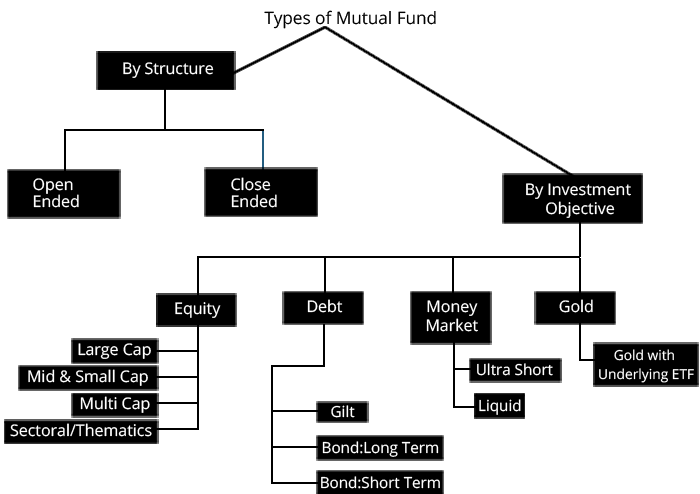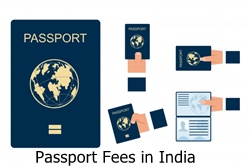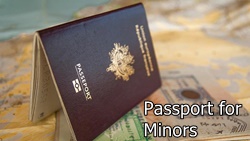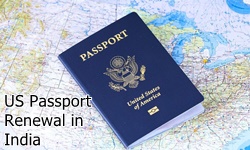
Table of Contents
Type of Passport in India
Did you ever think of sparing some time to know the types of passports in India? If you apply for a passport, which one should you be getting – blue, white, maroon or orange?

Make a guess!
It’s an interesting knowledge nugget to know how passport colors represent the nature of your work, the purpose of travels, etc. Let’s take a quick look at different types of passports in India.
Passport Types in India
1. Ordinary - P - Type of Passport
The ordinary passport, commonly known as passport type P, is issued to regular Indian citizens who plan a business or leisure trip to a foreign country. These are navy blue passports mainly used for personal trips, including educational, business, vacation, job, and other tours. So, it is obvious that the majority of Indians hold this general-purpose or ordinary passport.
Blue passport is the most common passport issued to the general public travelling for leisure or business purposes. Its primary purpose is to help foreign authorities distinguish between ordinary people and government officials. The blue color helps with the identification of the traveller’s official status.
These passports have the name of the traveller, with their birth date and a photograph. It contains other necessary identification details required for immigration. It features a sleek and simple design. Overall, this passport is issued to all ordinary citizens planning a trip to the international country for business or vacation.
Talk to our investment specialist
2. Official or Diplomatic Passport
As the name suggests, this passport is issued to government officials and diplomats traveling to international countries for government work. This means that only government representatives are eligible for official passports. They feature a white cover.
The maroon passport is for diplomats and high-ranking government personnel. The maroon-colored passport must not be confused with the white passport. The latter is for every government representative who plans a foreign trip for the country. On the other hand, maroon is for those working at the Indian Police Service department and Indian Administrative Services (IAS).
It is easier for maroon passport holders to plan foreign trips. Plus, they are given a distinctive treatment than the general passport holders. In addition to effective treatment, maroon passport holders enjoy a broad Range of perks. For one, they do not require a visa for foreign travels. No matter how long they plan on staying in a foreign country, they will not be asked to provide visas for foreign trips. Plus, the immigration process for these officials is cleared must faster than those holding the general passports.
3. White Passport
Out of all other passports, White is considered to be the most powerful. Only Indian government officials are eligible for white passport. It is issued to the holder who is travelling abroad for official purpose so that it easier for the immigration officials and customs to identify government officials and treat them accordingly.
4. Orange Passport
We witnessed a major change in the passports issued for Indian citizens in 2018. That was when the government had announced the launch of orange-coloured passports, and they stopped printing the address page in the Indian passports. The new passport looks absolutely different from the passports we have been using for the past few years. The revamped passports look pretty cool, with a sleek design and clean pages.
The Ministry of External Affairs has made it mandatory for ECR citizens to have a passport with the orange stamp attached. The main purpose of launching the stamp-based passport is to ensure safety for uneducated citizens. Basically, these passports are designed to protect people from getting exploited in international countries while seeking jobs. Plus, this transformation is to speed up the ECR verification and emigration procedure. The government has recently announced the launch of orange passports.
It is designed to help the immigration and foreign staff to identify the citizens who have not studied beyond 10th. The last page in this passport is missing, and so does the father’s name of the traveller and their permanent address. The unqualified travellers fall into the ECR category and are eligible for the orange passport, featuring a unique stamp. A special immigration criterion is followed for the orange passport holders.
What is ECR and ENCR Passport?
ENCR passport is for Indian travelers who travel to a foreign country for employment purposes. ECR passport is the one that’s issued before January 2007 and that doesn’t feature any notation. The passports issued after January 2007 fall into the ENCR category. ENCR stands for emigration check not required and it’s only issued to those who haven’t passed 10th standard.
Types of Passport in World
Like in India, foreign authorities issue different types of passports for international citizens traveling to different countries. For example, Saudi Arabia, Pakistan, and other Muslim countries issue a green passport, as the color is associated with Islam.
Black passports are used in New Zealand. It is one of the rarest colors. The US has tried different colors of passports, while Canada has white passports. The colors could be associated with religion or other reasons. In most countries, the government syncs the passport color with the country’s color.
China and other countries with communist history have red passports. India, North America, South America, and Australia are a few countries that fall into the “new world” nations, which is why they have blue passports for ordinary citizens.
All efforts have been made to ensure the information provided here is accurate. However, no guarantees are made regarding correctness of data. Please verify with scheme information document before making any investment.
You Might Also Like












